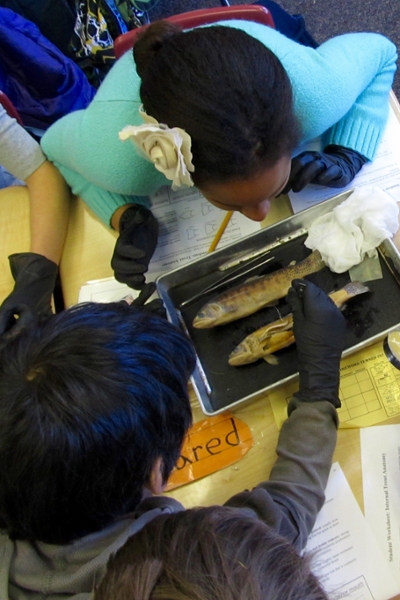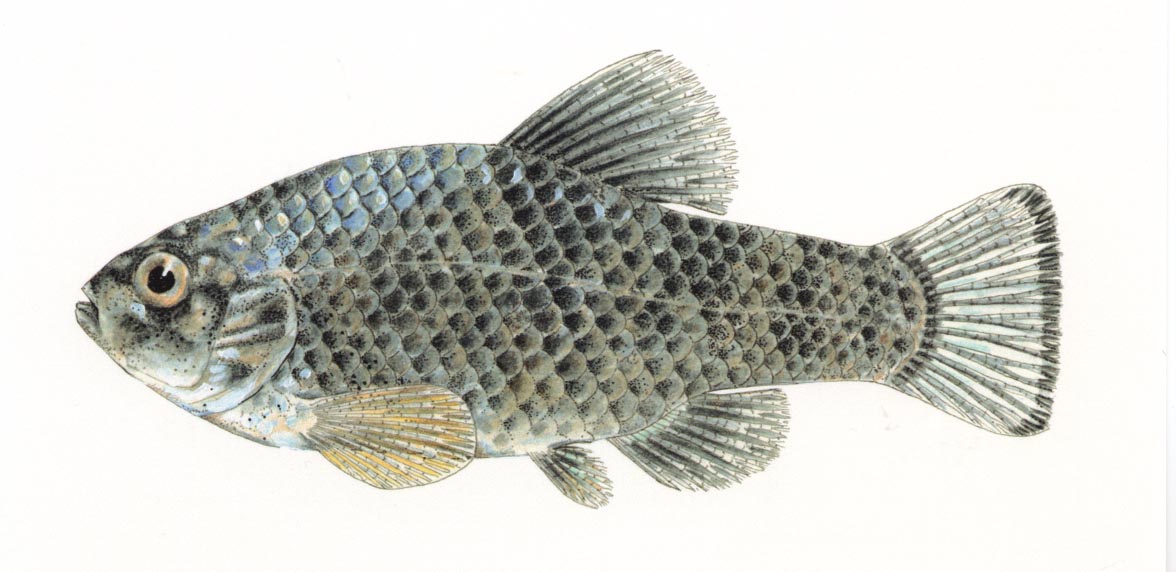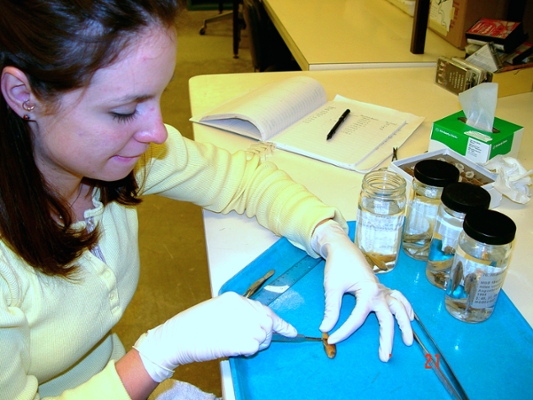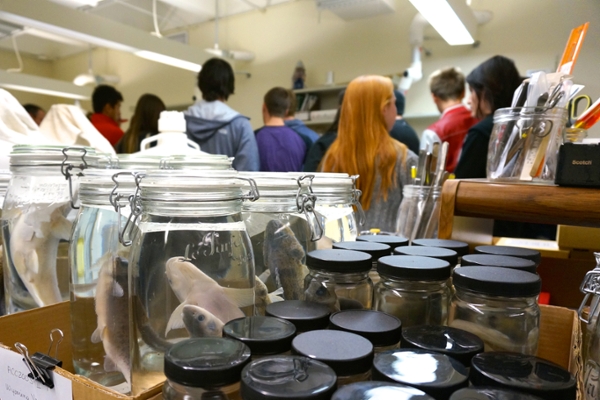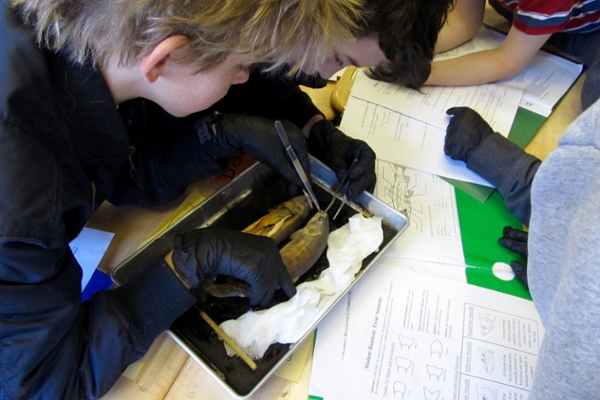Educational Opportunities in the Division of Fishes
The MSB Division of Fishes supports a wide variety of research and educational programs and a range of academic levels from high school students to postdoctoral scholars through its extensive specimen and data resources as well as staff support and assistance. We also occasionally provide educational tours for school groups. Please contact the museum administrator to arrange a visit.
High school students are encouraged to volunteer through the Albuquerque Public Schools Mentorship Program or coordinate with a teacher to develop a project that can be accommodated within the MSB Division of Fishes. Students can choose from a variety of topics, for example: museum curatorial techniques, museum best practices, ichthyology, freshwater aquatic studies and/or field biology.
Undergraduate students have many opportunities to learn fish biology, ecology, identification, and museum technical work under programs like NSF Research Experiences for Undergraduates, classes such as BIOL487 Ichthyology, which involve both field work and student research projects, and employment as curatorial assistants in the MSB Division of Fishes.
Graduate student research in the MSB Division of Fishes has typically centered on native fishes of New Mexico and aquatic biology of arid lands. Examples are studies on the native fishes of the Gila River Basin, Colorado River in Grand Canyon, and San Juan River. Graduate students not only enjoy opportunities to teach lab courses in UNM Biology but also to learn fish biology through museum curatorial projects. These projects include identification of fishes from various New Mexico and Southwestern field sites and database development and management.
Postdoctoral scholar projects for the last 5 years have involved research in the effects of stream channel complexity on native and non-native fishes in an invaded desert stream, reproductive timing and fish community structure in an arid-land stream, and aquatic invertebrates in dryland river systems.
Featured Educational Opportunites
The MSB Division of Fishes has provided specimens of New Mexico fishes to the US Fish and Wildlife Service, New Mexico Fish and Wildlife Office for the Native Fish in the Classroom program. Since the program’s inception in 2011, Angela P. James, USFWS Fisheries Biologist has guided hundreds of school children from Albuquerque and surrounding communities in learning about the wonders of New Mexico’s native fish fauna, their unique life histories, and many aquatic parameters required for the health of these fishes and the health of New Mexico’s river systems.
Elementary and middle school children are given the opportunity to raise different species of fishes, native to New Mexico streams and rivers, in aquaria that are staged in the classroom. The children, with the guidance of their teachers and Ms. James, care for the live fishes by feeding and monitoring water quality and health of fishes. In the spring months, the students bring the fishes to the Rio Grande and, depending on the species of fish, release the fishes as far north as Pilar NM for the cool water species like cutthroat trout or near the Bosque School for the middle Rio Grande species. During the winter months, Ms. James conducts in class presentations on fish anatomy and NM native fish identification. For these classroom exercises the MSB Division of Fishes provides specimens for student examination and dissection.
more information about this program
